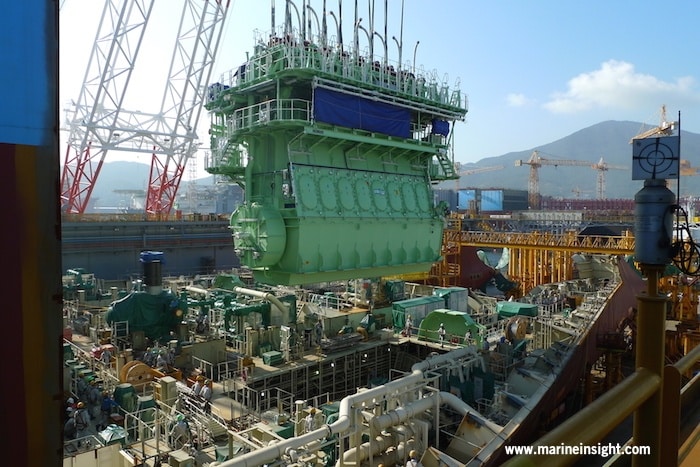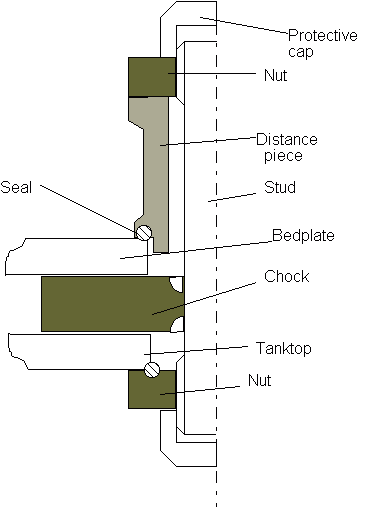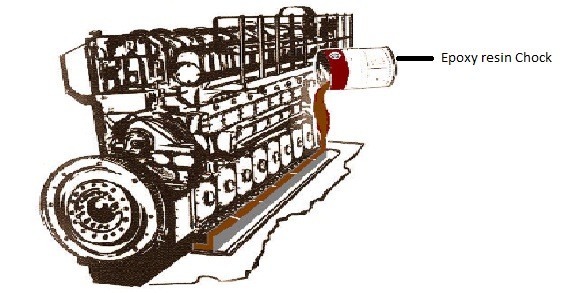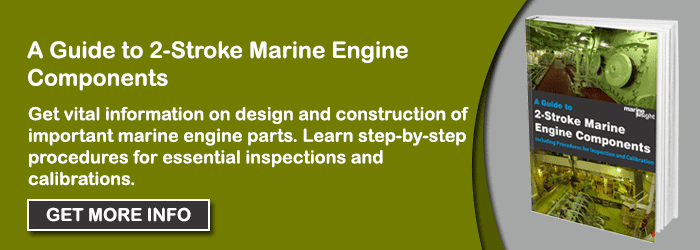How Massive Main Engines are Fitted in the Ship’s Engine Room?
A ship’s main engine is a massive structure with an average height of about 3 to 4 storey building (approx. 45 feet) and weight equals to 500 giant African elephants ( 2500 tonnes). While installing a new main engine in the engine room, the procedure is divided into parts on the basis of different parts of the engine. The engine is installed in parts in the shipyard itself during the ship building process.
The enormous structure of the main engine consists of several moving parts (both rotating and reciprocating) which transmits the engine mechanical power to the propeller for moving the ship further.

As all the components of the main engine are under different forces, the engine must be secured to the ship firmly to avoid any damage due to excessive vibrations.
The main engine is fitted on the ship’s hull with the help of holding down bolts and chocks. The floor where the engine is installed is excessively strengthened by heavy flooring and using additional bars and girders. The bedplate which is the base of the engine is attached by means of holding down bolts and chocks arrangement.
There are mainly two chock materials that are used to hold the main engine-
1. Cast steel Chock.
2. Epoxy resins Chock.
Cast steel chocks require expertise for installation and are expensive to use. In today’s time, marine engine makers are recommending epoxy resin based chocks which do not require any special measures and are also cost effective.

Preparation and Installation of Marine Engine
While installing the engine, first the whole engine- its crankshaft, intermediate shaft and propeller shaft along with propeller are aligned in a straight line. This is done by following a brief procedure:
- Clear the area where chocks and holding down bolts are to be fitted.
- Prepare the chock well before time by mixing hardener and resin as required by the weight or volume ratio.
- All holes for bolts must be kept pre-drilled and bolts available but not be inserted.
- Prepare foam dam for chock’s installation.
- Ensure there is no hot work going on nearby the operating place.
- The pouring temperature must be more than 25 °C. If less, heat the solution while pouring.
- Fit a holding bolt in the hole drilled and spray releasing agent chemical on them
- Pour resin mixture around the inserted bolt.

- Tighten the holding down bolt with the help of hydraulic jack at required pressure.
- Side chocks are fitted in line with main bearing girders.
- End chocks are fitted at aft and fore end to resist axial trust from the propeller.
The dried up time of epoxy resins depends on the steel temperature which goes from no cure to a curing time of 48 hours.
Advantages:
- Deliver almost 100% contact even on a rough surface.
- Cheap installation and no special hands are required.
- Chemical resistant
- Non corrosive
Disadvantages:
- If engine is misaligned or chocks are incorrectly fitted, the overall life reduces.
- Over tightening or stressing of holding bolts may lead to chock damage.
- Maximum temperature of exposure is 80 °C.
The holding down bolts and chocks are very small components they must be inspected and checked regularly for tightness as loose bolts may lead to heavy engine vibration, misalignment, bearing damage, and even crankcase explosion.
Do you have info to share with us ? Suggest a correction
Subscribe To Our Newsletters
By subscribing, you agree to our Privacy Policy and may receive occasional deal communications; you can unsubscribe anytime.




